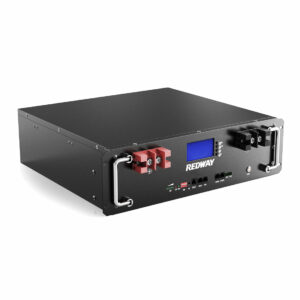How To Check Telecom Battery Voltage?
Telecom battery voltage is checked using a multimeter set to DC volts. Measure terminals at 25°C (77°F) for accuracy. Lead-acid should read 12.6-12.8V (fully charged), Li-Ion 13.2-13.4V. Always wear insulated gloves and verify float voltage matches manufacturer specs.
What Determines Telecom Battery Weight?
What tools are needed to check telecom battery voltage?
Essential tools include a digital multimeter, insulated gloves, and temperature probe. For lithium systems, add a BMS interface to read cell-level data. Always verify tool calibration every 6 months.

Accurate voltage measurement starts with a CAT III 1000V-rated multimeter – telecom batteries often operate at 48V nominal. Pro tip: Use Kelvin clips for stable contact in crowded cabinets. Temperature compensation matters: a lead-acid battery at 30°C reads 0.3V lower than at 20°C. Imagine a thermometer affecting a speedometer – that’s how heat skews voltage. But what if your multimeter lacks true RMS? You’ll miss ripple voltage in rectified systems. Critical for VRLA batteries: surface charge must be removed by applying a 30A load for 30 seconds before testing.
How to safely measure battery terminals?
De-energize equipment, wear dielectric PPE, and measure negative-to-positive terminals. For parallel banks, check each battery individually to avoid ghost voltages.
Start by isolating the battery from the load using a disconnect switch. Why? Backfeed from inverters can create false readings. Place red probe on positive, black on negative – reverse polarity triggers meter’s minus sign but won’t damage modern DMMs. For telecom cabinets with multiple batteries, measure inter-cell connections to detect high-resistance joints. Real-world example: A 48V bank showing 47.2V might have one cell at 10.5V (weak) and others at 12.8V. Transitioning to maintenance, always log voltages with timestamps – trends matter more than single measurements.
What voltage ranges indicate problems?
Lead-acid below 11.8V signals sulfation; lithium-ion under 12.0V suggests deep discharge. Overvoltage above 15V (12V battery) means rectifier failure.
Here’s the breakdown: A 12V VRLA at 12.1V has 50% capacity, while 10.5V is fully depleted. Lithium telecom batteries use steep curves – 13.2V (100% SOC) vs 12.8V (20%). Table below shows critical thresholds:
| Battery Type | Danger Low (V) | Danger High (V) |
|---|---|---|
| VRLA | 10.5 | 15.0 |
| Li-Ion | 12.0 | 14.6 |
Ever seen a battery swell? Overcharging lithium beyond 14.6V causes electrolyte decomposition. Transitioning to solutions, equalize charging fixes lead-acid stratification – but only if done before voltage drops below 12.0V.
What Powers Cell Towers During Outages? Telecom Battery Essentials
How does temperature affect voltage readings?
Voltage drops 0.0033V/°C/cell in lead-acid. Lithium shows minimal change until extreme temperatures disrupt electron flow.
A VRLA battery at -20°C reads 12.1V (actual 12.7V) due to slowed chemical reactions. Conversely, at 45°C, the same battery shows 0.5V higher than true state. That’s why temperature-compensated chargers adjust float voltage dynamically. Imagine trying to weigh yourself on a vibrating scale – thermal noise requires compensation algorithms. Advanced BMS units in lithium packs use NTC thermistors to correct readings. Always measure battery temperature at the terminal post, not ambient air.
When to perform load testing vs voltage checks?
Voltage checks are daily quick tests; load banks validate runtime quarterly. Failed voltage under load = immediate replacement.
A battery showing 12.8V might collapse to 9V under 50A load if plates are corroded. Load testing applies 25-50% C20 rating for 15 seconds. Comparison:
| Test Type | Duration | Pass Criteria |
|---|---|---|
| Voltage | 2 minutes | ±2% of spec |
| Load | 15 minutes | Voltage stays above cutoff |
Why bother with both? Voltage is like checking engine oil level, while load testing is a dyno run. Transitioning to records, NFPA 110 mandates monthly voltage logs and annual load tests for critical telecom backups.
FAQs
Can I check voltage without disconnecting the battery?
Yes, but parasitic loads (e.g., alarm systems) may cause slight undervoltage. For precise SOC, isolate batteries first.
How often should telecom batteries be tested?
Perform weekly voltage checks and annual load tests. In harsh environments, test lithium every 3 months due to steep discharge curves.



